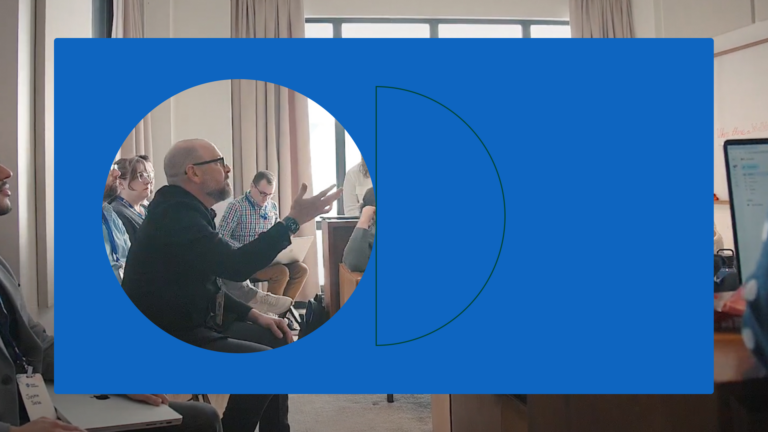Leading Design Teams

A response to Tomas Chamorro-Premuzik’s “Seven Rules for Managing Creative People”
In last week’s “Seven Rules for Managing Creative People” on the Harvard Business Review blog, Tomas Chamorro legitimately upset a lot of people in the design industry. I have been thinking about the post for over a week and finally was able to approach it with what I hope are constructive thoughts.
Chamorro’s provocative and potentially incendiary language perpetuates the myth that the design community is made up of temperamental, childlike artists who demand special treatment. Sadly, this approach obscures some insights into leading a design organization.
Editorial Note: Throughout this post, I use the term “designers” rather than the outdated and loaded term “creatives.” I assume Chamorro was talking about the design community, and (NSFW) I’m not the only one.
I believe the stereotypical “temperamental designer” is a myth. In my experience, under good leadership most designers don’t need any special treatment or considerations beyond the managerially mundane: e.g., faster computers if they do processor-intensive work. My advice to leaders of designers is to think about whether your staff is doing production work or design work and act accordingly. More on that below.
I am not questioning Chamorro’s credentials or his research, only his approach. In fact I applaud him for referencing academic studies.
So, without any further ado, behold Chamorro’s rules, Charron-style:
Provide Room To Experiment
This replaces Chamorro’s “Spoil them and let them fail.” There’s plenty of anecdotal and quantitative research out there that shows the most innovative groups succeed through experimentation. This isn’t a new concept, and it’s something each new worker brings to the table in their own way. I don’t get Chamorro’s advice to “spoil them.” I don’t see anything in his evidence that supports the idea that spoiling one group of employees over another, regardless of their role, will get you any advantage. As employees’ achievements pile up, they deserve more trust and—dare I say it—more privileges.
Design is a different job than other jobs. Folks in a production role should avoid failure like the plague. Folks in a design role should understand how experimentation works and not be punished when a reasonable, well planned experiment fails—as long as they learn from it.
Strive For Diverse Teams
Instead of Chamorro’s “Surround them by semi-boring people,” focus on how you pick your teams. Diverse teams find better solutions to problems. We’re not talking solely about traditional EEO diversity; diversity of thought, background and skill sets are all-important to team dynamics.
“Boring” is too subjective to be constructive. Start talking to me about hockey and my eyes will glaze over, but ask me about the electoral college and I’ll ramble on for hours. Others will have the opposite reaction. That doesn’t make either of us boring.
So, strive for intellectual diversity on your teams and encourage them to use divergent and convergent thinking methods. Also, make sure teams know their input is welcome, but each team member has a domain over which they make decisions and execute. For instance, the best project managers I’ve worked with get involved in design, but they are ultimately responsible for keeping the entire team up-to-date on the schedule, budget and milestones. These are not, as Chamorro puts it, “mundane executional processes” or “dirty work.” They’re important and designers may struggle without someone in that role. Trust me, I struggle without a good PM. When I find one, I want to work with them indefinitely.
Eliminate Meaningless Work
Chamorro’s recommendation, “Only involve them in meaningful work” implies there’s meaningless work in your organization. Ask any business leader, “Where does the meaningful work get done?” and their response should be, “Everywhere. If anyone is focusing on anything meaningless, I’d fire them.”
Everyone wants to know that the work they do counts for something, not just designers. Now, there are mundane, trivial tasks that we do every day, but they should have a purpose. When tasks get in the way of people focusing on the value they provide to the organization, find ways to minimize or eliminate those tasks. For instance, if your traveling consultants take four hours each week filling out expense reports and booking travel, hire an admin for your consulting department to deal with that stuff. It’s not that the admin will be doing meaningless work, he’s freeing up your consultants so they can bill more hours. It’s just good business.
Get Out Of Their Hair
This is not too different than Chamorro’s “Don’t pressure them” because I largely agree with what Chamorro is saying. I like that an academic is using Mad Men as an example for how to manage people. I’ve used it myself. It’s not a true case study, but it’s clear from that show that the writers have a grip on some of the realities of the design industry.
Chamorro’s point centers around the notion that you should not force unnecessary processes or structures on design teams. I completely agree and this—again—comes down to good project management.
As Ferran Adrià says, “There is a difference between creativity and production.” If you’re forcing your people into a process-for-process’s sake, they’re not designing anything. They’re executing a process. In the end, stay out of their hair and let them do their job. They’re better at some things than you are, that’s why you hired them. If you’re a manager or a business owner and you don’t know this, you are probably struggling more than you care to admit.
Pay Them A Competitive Salary
Nothing attracted more ire from the design community than the terrible advice to “Pay them poorly.” In his twitter feed and in the comments section on the post, Chamorro tried to justify this as a “metaphor” for “Don’t overpay them.” I think he was trying to be provocative, but it backfired, and rightfully so.
We have known for years that money alone is a poor motivator for good work. This doesn’t mean you should be cheap with your design staff—quite the contrary. Good design talent is worth the money and good designers know it. Pay them what’s competitive in your market, make sure they have rewarding and challenging work and they are likely to stay. If you consciously underpay them and they don’t leave, I’d question how valuable they are to begin with. Fair Pay + Rewarding Work = Higher Retention. Take away one of the variables and you throw off the balance. When you think it’s time to throw money at the issue, it’s usually too late.
Provide A Continuous Stream Of Challenging, Rewarding Work
The title of Chamorro’s rule, “Surprise them,” isn’t the issue. Everything in the description generalizes designers with behaviors I have never witnessed. Chamorro says creatives “take a different route to work every day, even if it gets them lost, and never repeat an order at a restaurant, even if they really liked it.” He has never been to lunch or carpooled with anyone at Think Brownstone. His examples seem more literary tools than facts.
I may take the same route to work every day, but that is production work. For design work, I prefer to be challenged. Earlier in my career, I could lay down code, write scripts, or document requirements for days-on-end. Once it became routine, I got bored and found other work that I enjoyed. I was lucky enough to work where successful employees could find new challenges. I carried that practice on to my staff when I started managing people.
It takes time to get to that point in a career, but once you get there, you want others to follow. If anyone is in a rut and pigeonholed in your organization with no way out, they’ll leave.
Recognize Good Work Immediately And Often
Chamorro’s “Make them feel important” rings of the type of condescension that people smell from a mile away. Guess what—they are important. So is everyone who provides a service within your organization.
If you are not focused on recognizing good work, you’re probably way busier dealing with turnover. It doesn’t matter if you’re managing McDonald’s or Sterling Cooper Draper Pryce. If every member of your organization is not important and doesn’t feel like they’re contributing something important, you’re wasting your money. You’re doing it wrong.
If You See Any Signs Of Clinical Psychopathy, Get Them Help
Chamorro’s connection between corporate innovators and psychopaths is academic to the point of being misleading and—again—intended more to provoke a reaction from the community than to provide any managerial guidance. It also undermines the importance of helping those who have legitimate problems.



